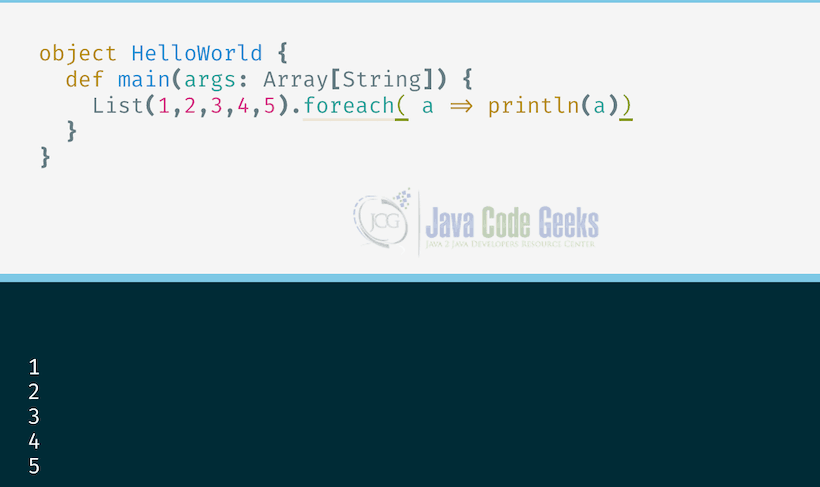

If loops are one of the first things you learn in Scala, that will validate all the other concepts you might have encountered in other languages. Here’s a description of Future from its Scaladoc: A Future represents a value which may or may not currently be. It’s as if you wanted to learn French but still pronounce the ‘h’. When you want to write parallel and concurrent applications in Scala, you could still use the native Java Thread but the Scala Future makes parallel/concurrent programming much simpler, and it’s preferred.

For example, this is how you use foreach to print the previous list of strings: people. For Each method is also used to iterate over tuples. The foreach method For the purpose of iterating over a collection of elements and printing its contents you can also use the foreach method that’s available to Scala collections classes. A foreach loop in Scala is simply a loop that can be used to iterate over a range of elements for simply printing those elements, calculating the sum of these elements, finding and replacing any particular element, finding the maximum element out of these elements, etc. We can use the match expression using for each method. In Scala collections, if one wants to iterate over a collection (without returning results, i.e. Scala Map key and Value pairs can be iterated using the for-each loop in Scala.

We can apply function to each and every element using the Scala Map For Each. Learning loops to get familiar with Scala is bad. The For Each loop is used to iterate all the elements in a Map. What I actually got: What should we use instead? If you don’t want us to use them, why are you showing us this? What I was expecting from the audience: “OK, we’ve wiped my memory clean and fresh. I even continued further: “I’ve just shown you loops so that you can relate to them, but please don’t use them.”. For a long time, I’ve been guilty of this myself. People look confused, so the instructor continues: “Just trust me.”. iterator makes it more efficient by avoiding all the intermediate copies.// values are constants val x = 3 // variables are changeable, much like any other language var y = 4 y = 5 // reassignment ok // looping while ( y < 42 ) Īfter that, the instructor usually says: “Cool, now that you’ve learned about while, please don’t use them. iterator call, it'd work differently: first, it would run the entire array through filter, and create a new array, containing only positive numbers, then, it'd run that new array through map, and create a new one, with the numbers divided by 6, then it'd go through this last array to print out the values. DELAWARE CORPORATION: WRITE REVIEW: Address: 3422 Old Capitol Trl Ste 700 Wilmington, DE 19808: Registered Agent: Delaware Business Incorporators, Inc.
#Scala foreach code#
The way it is written, the code will take first argument from the array, send it through filter, if it returns false, it'll stop, and go back to the second element, if filter returns true, it'll send that element to map, then print it out, then go back, grab the next element etc. The difference is that iterators are lazy. Everything would work the same way if you take it out. arr.foreach and passes it to foreach as an argument, the way I wrote it originally, just passes println itself as an argument.Īlso, note a call to. You can just give it a name, and reference it as you would any other variable. The argument is current element of the list, as it has been pointed out in other answers. The argument to foreach is a function, taking one argument, and returning a Unit.


 0 kommentar(er)
0 kommentar(er)
